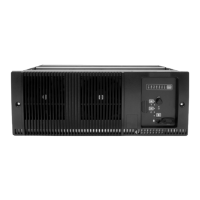TB9100/P25 CG/P25 TAG Installation and Operation Manual Maintenance 89
© Tait Limited March 2014
5 Maintenance
The base station is designed to be very reliable and should require little
maintenance. However, performing regular checks will prolong the life of
the equipment and prevent problems from happening.
It is beyond the scope of this manual to list every check that you should
perform on your base station. The type and frequency of maintenance
checks will depend on the location and type of your system. The checks and
procedures listed below can be used as a starting point for your maintenance
schedule.
Performance Checks We suggest you monitor the following operational parameters using the
CSS:
■ VSWR
■ DC input voltage, especially on transmit
■ receiver sensitivity
■ the setting of the receiver gate opening
■ any temperature alarms.
These basic checks will provide an overview of how well your base station
is operating.
Reciter Check UHF reciters for frequency drift after 3 months service and annually
thereafter. If the drift is > 0.5ppm, adjust the carrier frequency offset. For
details, see the Calibration Software Help or manual.
Check the modulation fidelity from time to time or if you suspect a
degradation in sensitivity on the downlink. For instructions, see “Short
Tuning Procedure” on page 53.
PA There are no special maintenance requirements for the PA.
PMU There are no special maintenance requirements for the PMU. However, we
suggest that you periodically check that the screws on the DC input
terminals are tight. They may work loose with thermal cycling. Also, if you
are using battery back-up, you should check the batteries regularly in
accordance with the manufacturer’s recommendations.
Ventilation The base station has been designed to have a front-to-back cooling airflow.
We strongly recommend that you periodically check and maintain the
ventilation requirements described in “Equipment Ventilation” on page 40
to ensure a long life and trouble-free operation for your base station.

